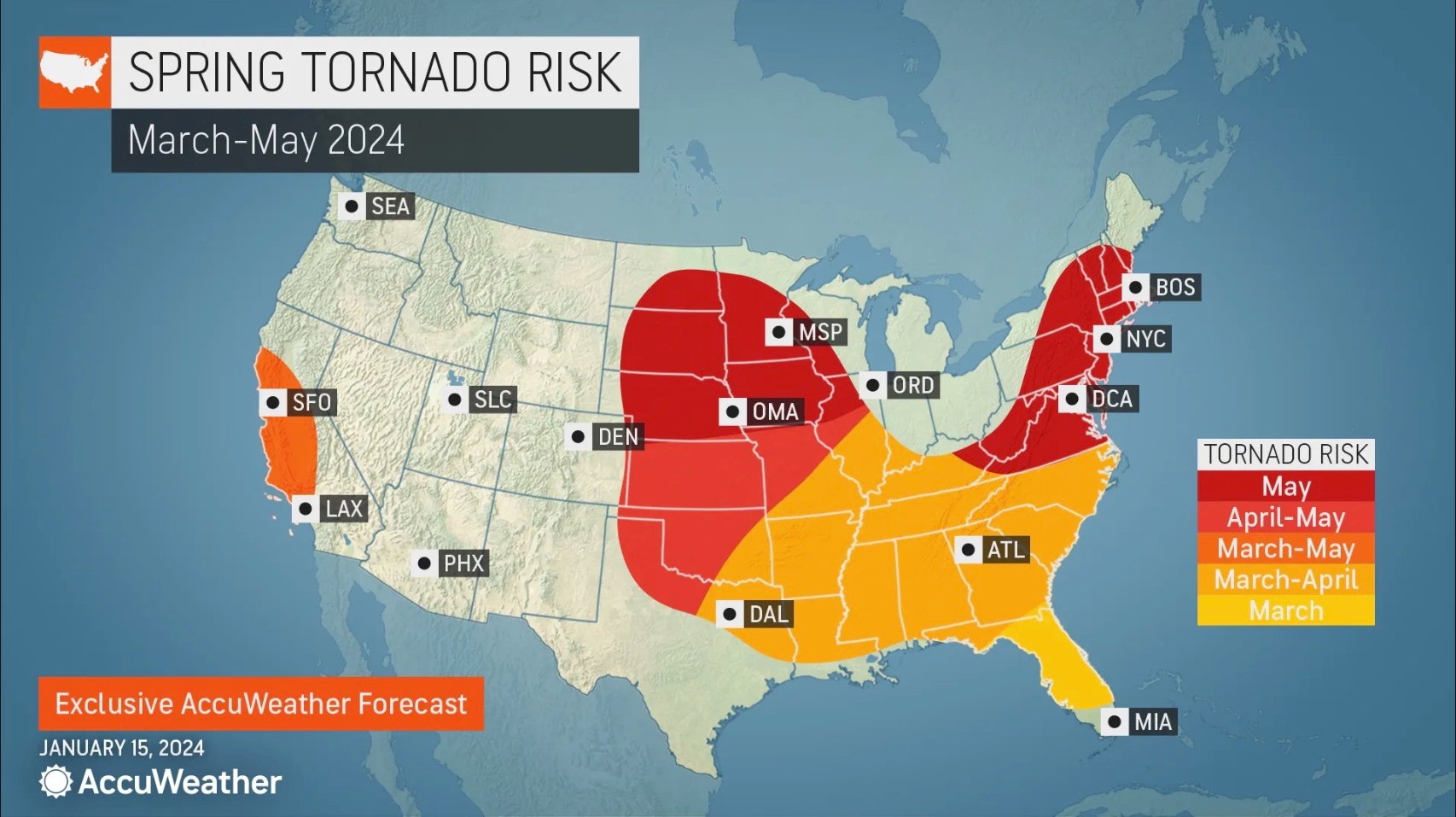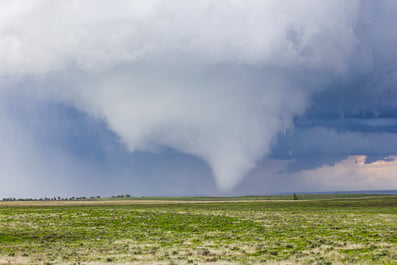AccuWeather's 2024 Spring Forecast: Implications for businesses
.jpg?width=2000&height=1125&name=Untitled%20design%20(19).jpg)
Summary
AccuWeather's 2024 spring forecast predicts a mix of weather conditions that could significantly impact industries, making it critical for businesses to prepare for potential weather-related dangers and disruptions.
Key Highlights
The forecast predicts a stormy pattern in the East, a late arrival of spring-like weather in the southern states, and an early end to winter in regions of the North, which could affect consumer purchasing behaviors and construction schedules.
The potential "collapse" of El Niño could lead to a surge of twisters in Tornado Alley, frequent rainfall in the Southeast, and a persistent stormy pattern on the West Coast.
Businesses are advised to stay updated with AccuWeather's forecasts, develop a severe weather plan, ensure adequate insurance coverage, and prepare for business continuity to minimize disruption to their operations.
As winter comes to a close, businesses across various sectors need to brace themselves for the potential impacts of the changing weather and welcome the arrival of spring. AccuWeather's 2024 spring forecast suggests a mix of conditions that could significantly affect businesses, from retail to construction and even agriculture.
Spring Weather Forecast Overview
The forecast predicts a stormy pattern from late February to the start of March, particularly in the East. "It could come in like a lion in the East," AccuWeather Veteran Meteorologist and Long-Range Forecaster Paul Pastelok said. "We may have a pretty stormy pattern from late February to the start of March."
However, this won't be the case across the entire country. While spring-like weather could be late to arrive in more than a dozen states across the southern United States, an early end to winter is possible in regions of the Northern tier.
The forecast also suggests a potential "collapse" of El Niño, which could lead to a surge of twisters in Tornado Alley.

The Southeast could experience frequent rainfall, potentially triggering flooding from the Gulf Coast through the mid-Atlantic. Meanwhile, the West Coast could see the persistence of a stormy pattern into the first part of spring.
Impact on Retail
Weather conditions significantly influence consumer purchasing behaviors, affecting what, when, and where they buy. This, in turn, impacts retailers and other stakeholders regarding stock management and staffing.
For example, the forecasted stormy pattern in the East could affect consumer behavior, potentially leading to increased sales of weather-appropriate clothing and equipment. On the other hand, the late arrival of spring-like weather in the southern states could delay the shift in consumer demand from winter to spring merchandise.
Impact on Construction
The construction industry is heavily influenced by weather conditions, which determine the materials used, the construction timeframe, and the durability of the constructed buildings.
The forecasted stormy pattern in the East could lead to delays in construction projects due to safety concerns. In the Southeast, frequent rainfall could cause issues with moisture, affecting the quality of construction materials and potentially leading to project delays.
In the West, the persistence of a stormy pattern could also affect construction schedules. However, the forecasted warmer-than-average spring could accelerate the drying process, potentially allowing construction activities to resume sooner.
Impact on Agriculture
The weather forecast also has significant implications for the agriculture sector. The predicted early end to winter in regions of the Northern tier could allow for an earlier start to the planting season. Dry spells in the spring will allow farmers to spend more time working in the fields earlier in the season, potentially allowing them to plant more compared to during a wetter spring.
However, the forecasted frequent rainfall in the Southeast could lead to flooding, potentially damaging crops and delaying planting schedules. On the other hand, the rainfall could also help to erase the rainfall deficits in the region, improving conditions for crop growth.
Preparing for the Spring Weather
Given the potential impacts of the spring weather forecast, businesses need to prepare accordingly. This could involve identifying potential risks, addressing vulnerabilities, and evaluating the current state of the business. Also, ensuring you have the most accurate and best-communicated forecasts possible from AccuWeather can help you effectively plan around these conditions and make the best decisions.
For example, businesses could identify alternate suppliers to keep operations running in case of major disruptions. Regular inspections and maintenance of vehicles, buildings, and equipment could also help to prevent potential damage from severe weather. In the event of property damage, businesses should have a plan in place to solve the problem as quickly as possible.
Here are some other ways your business can be the best prepared for severe weather this spring:
- Stay Informed: The first step in preparing for severe weather is to stay updated with the latest weather forecasts. AccuWeather provides long-range, real-time, location-specific forecasts to help businesses anticipate weather changes and plan accordingly.
- Develop a Severe Weather Plan: Businesses should have a comprehensive plan for severe weather. This includes identifying a secure interior space for people to shelter in the event of a tornado or other severe weather, maintaining an emergency kit, and conducting regular safety drills.
- Ensure Adequate Insurance Coverage: It's crucial for businesses to check their insurance policies to ensure they have sufficient coverage for damage caused by severe weather. This can help minimize financial losses in the event of a disaster.
- Prepare for Business Continuity: Businesses should have a continuity plan that outlines how they will continue to operate during and after a severe weather event. This includes identifying key personnel, backing up essential data, and establishing communication plans.
- Use AccuWeather's SkyGuard Warnings: AccuWeather's SkyGuard Warnings provide businesses with customized, site-specific warnings for hazardous weather. These warnings can help companies take necessary precautions and take action to protect their employees, customers, and assets.
By taking these steps, businesses can better prepare for the potential impacts of severe weather and minimize disruption to their operations.
Superior Accuracy™: Better informed. Better protected. Better prepared.
AccuWeather's SkyGuard Notifications deliver timely and actionable insights to businesses, offering advance warnings for severe weather events. AccuWeather provides an average of 16 advance notices when tornadoes are in the forecast, compared to only 8 minutes from all other sources. That means AccuWeather gives you more time to prepare better and get to shelter – all critical when seconds count and lives are on the line.
Want to learn more about how AccuWeather For Business can help your business better prepare for severe weather? Contact one of our experts and get a demonstration of AccuWeather's SkyGuard Notifications and protect your business, employees, and assets.







